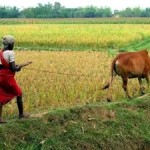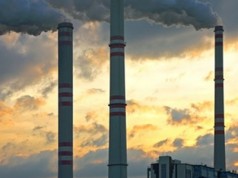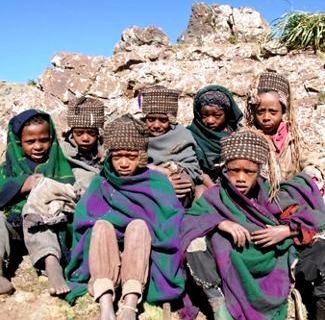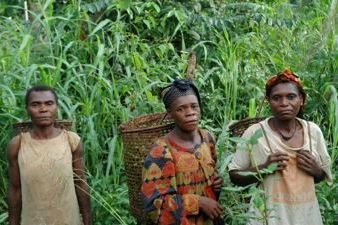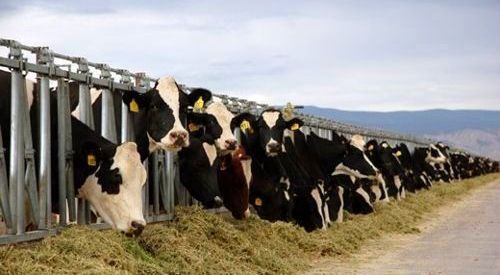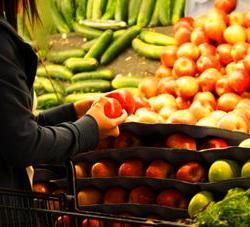 Rome – The waste of a staggering 1.3 billion tonnes of food per year is not only causing major economic losses but also wreaking significant harm on the natural resources that humanity relies upon to feed itself, says a new FAO report released on September 11.
Rome – The waste of a staggering 1.3 billion tonnes of food per year is not only causing major economic losses but also wreaking significant harm on the natural resources that humanity relies upon to feed itself, says a new FAO report released on September 11.
“Food Wastage Footprint: Impacts on Natural Resources” is the first study to analyze the impacts of global food wastage from an environmental perspective, looking specifically at its consequences for the climate, water and land use, and biodiversity.
Among its key findings: Each year, food that is produced but not eaten guzzles up a volume of water equivalent to the annual flow of Russia’s Volga River and is responsible for adding 3.3 billion tonnes of greenhouse gases to the planet’s atmosphere. In addition to its environmental impacts, the direct economic consequences to producers of food wastage (excluding fish and seafood) run to the tune of $ 750 billion annually, FAO’s report estimates.
“We all – farmers and fishers; food processers and supermarkets; local and national governments; individual consumers – must make changes at every link of the human food chain to prevent food wastage from happening in the first place, and reuse or recycle it when we can’t,” said FAO Director-General José Graziano da Silva.
“In addition to the environmental imperative, there is a moral one: We simply cannot allow one-third of all the food we produce to go to waste, when 870 million people go hungry every day,” he added.
As a companion to its new study, FAO has also published “tool-kit” that contains recommendations on how food loss and waste can be reduced at every stage of the food chain. The tool-kit profiles a number of projects around the world that show how national and local governments, farmers, businesses, and individual consumers can take steps to tackle the problem.
Achim Steiner, UN Under-Secretary General and UN Environment Programme (UNEP) Executive Director, said, “UNEP and FAO have identified food waste and loss – food wastage – as a major opportunity for economies everywhere to assist in a transition towards a low carbon, resource efficient and inclusive Green Economy. Today’s excellent report by the FAO underlines the multiple benefits that can be realized – in many cases through simple and thoughtful measures by, for example, households, retailers, restaurants, schools and businesses – that can contribute to environmental sustainability, economic improvements, food security and the realization of the UN Secretary General’s Zero Hunger Challenge. We would urge everyone to adopt the motto of our joint campaign: Think Eat Save-Reduce Your Foodprint!“
UNEP and FAO are founding partners of the Think Eat Save-Reduce Your Foodprint campaign that was launched earlier in the year and whose aim is to assist in coordinating world-wide efforts to manage down food wastage.
Where Wastage Happens
Fifty-four percent of the world’s food wastage occurs “upstream” during production, post-harvest handling and storage, according to FAO’s study. Forty-six percent of it happens “downstream”, at the processing, distribution and consumption stages.
As a general trend, developing countries suffer more food losses during agricultural production, while food waste at the retail and consumer level tends to be higher in middle- and high-income regions – where it accounts for 31-39 percent of total wastage – than in low-income regions (4-16 percent).
The later a food product is lost along the chain, the greater the environmental consequences, FAO’s report notes, since the environmental costs incurred during processing, transport, storage and cooking must be added to the initial production costs.
Hot Spots
Several world food wastage “hot-spots” stand out in the study:
Wastage of cereals in Asia is a significant problem, with major impacts on carbon emissions and water and land use. Rice’s profile is particularly noticeable, given its high methane emissions combined with a large level of wastage.
While meat wastage volumes in all world regions is comparatively low, the meat sector generates a substantial impact on the environment in terms of land occupation and carbon footprint, especially in high-income countries and Latin America, which in combination account for 80 percent of all meat wastage. Excluding Latin America, high-income regions are responsible for about 67 percent of all meat wastage.
Fruit wastage contributes significantly to water waste in Asia, Latin America, and Europe, mainly as a result of extremely high wastage levels.
Similarly, large volumes of vegetable wastage in industrialized Asia, Europe, and South and South East Asia translates into a large carbon footprint for that sector.

